|
Recently there have been many reports from pet owners dealing with their pets becoming ill and dying, suspected from their pet food. 397 dogs that are sick or have died, suspected from their pet food. 129 cats that are sick or have died, suspected from their pet food. Of these animals, 222 listed only Purina pet foods, but there are other brands being reported. While Purina denies any problems, there is no proof yet or evidence that the illnesses/deaths are related to the food, but people are working together to have foods tested. While there are no recalls yet with these recent scares, possibly never will be, it is interesting to note that just recently there were 2 recalls on Purina. 1) Nestle Purina Petcare Company voluntarily recalled Purina Pro Plan Veterinarian Diets EI Elemental Dry Food)= because of elevated vitamin D levels. Too much vitamin D can lead to kidney failure and a whole host of other health issues. 2) Additionally, Nestle recall Purina Pro Plan Veterinary Diets EN Gastroenteric Low Fat Wet Dog Canned Food due to labeling error. Just because a food has been "safe" in the past does not mean that there haven't been changes in the ingredients (FDA does not require pet food companies to change labels with many changes) and, of course, it could be something even worse such as a contaminated machine in one of the factories which produce products used in all sorts of different major brands. Purina Pro Plan is the most common food reported. It is being recommended that if you or someone you know is feeding this food, stop immediately, and do not wait until your pet gets sick or Purina issues a recall. It seems to be from all different types of Purina, with Purina Pro Plan being the most common. If you feed Purina, (and be aware that many other brands are made in the same factories as Purina so this may be far reaching), and have any issues, it is recommended that you stop feeding, save the pet food, (do NOT release it to Purina in any circumstances), contact your vet and request a copy of your pet's medical records, ask the vet to report your concerns to Purina (good luck with that - many vets recommend Purina). Report it to the FDA (https://truthaboutpetfood.com/report-a-suspect-risk-pet) and report it to Purina (https://www.purina.com/contact-us). Do NOT agree to send them the food. If you feel compelled to do so, only send a small portion. Keep the rest of the food IN THE FREEZER in case it needs to be tested later. Document your conversation with Purina. Purina may eventually say they will pay your vet bills and reimburse you for your pet food. If you agree to this they will ask you to sign a form which will prohibit you from taking action. If there is a class action lawsuit you will be unable to join if you do this or if you want to file your own lawsuit. Many people are having their pet food tested, at their own expense of course. (It's not cheap and you have to submit for each thing being tested). https://truthaboutpetfood.com/help-to-check-your-pet-food/) Purina has already been notified by numerous pet owners and they have not done anything to alert unsuspecting pet parents. Initially, they were offering to reimburse the pet owners for their pet ood. Currently, they are offering pet parents $10 in coupons (which is what Hills offered someone for their dead dog) and having a third party contact the pet parents. Already, we are seeing Purina pet food become "unavailable" on the store shelves. This is called a silent recall. The pet food manufacturer doesn't want to admit there is a problem with the product, so they start pulling the products off the shelves quietly. (Hills did this for 60 days before the recall). So how do you decide what brand to use? The front of the pet food bag will NOT help you choose what's safe -- it's just marketing and propaganda. Pet food regulations state that a pet food label can contain "unqualified claims, either directly or indirectly". Legally, in any form of advertising, a pet food company can lie to you. Did you know that many pet foods contain the euthanasia drug, sodium pentobarbital? 20 years ago the FDA tested a number of dry dog foods and found this drug in foods like Gravy Train, Kibbles 'N Bits, and Ol' Roy. (The results of those studies is documented in Dog Food Samples Used in CVM Pentobarbital Surveys and Analytical Results). The FDA concluded that: "There appear to be associations between rendered or hydrolyzed ingredients and the presence of pentobarbital in dog food. The ingredients Meat and Bone Meal (MBM), Beef and Bone Meal (BBM), Animal Fat (AF), and Animal Digest (AD), are rendered or hydrolyzed from animal sources that could include euthanized animals." Based on these findings, the FDA wanted to know where the drug was coming from so they conducted species analysis testing on the dog food. The assumed the origin of the pentobarbital was from euthanized dogs and cats or possibly horses. (ick). But their test was never able to identify any species ... including canine, feline, or equine DNA. So, despite these failed tests, and because the FDA found only "very, very low levels" of sodium pentobarbital (parts per billion) in the dog foods, they decided it was a risk they were comfortable living with. Since the FDA didn't believe it posed an immediate danger to pets, their conclusion was at those low levels it was "unlikely to cause them any adverse health effects", so the agency DECIDED NOT TO TAKE A POSITION TO ELIMINATE EUTHANIZING DRUGS FROM PET FOODS AND ANIMAL FEED! So guess what? These foods that contained euthanasia drugs stayed on the market! Not a single one of those illegal pet foods were was withdrawn or recalled from the market. Atleast, today, the FDA states that pentobarbital in any amount -- even in parts per billion -- is illegal in pet food and "any detection of pentobarbital in pet food is a violation of the Federal Food, Drug, and Cosmetic Act -- simply put, pentobarbital should not be in pet food." Perhaps if the FDA had taken a stronger position 20 years ago and required the removal from the market the food laced with pentobarbital, manufacturers would have been sent a stern message. So, pet food companies know that the FDA will not take action over certain 'objectionable practices" in pet food today. Guess what else? Canned pet food may contain material from 3D and 4D animals "regardless of the origin of animal tissues used". The FDA considers it fit for animal consumption even though it is in violation of law: "Pet food consisting of material from diseased animals or animals which have died otherwise than by slaughter, which is in violation of 402(a)(5) will not ordinarily be actionable, if it is not otherwise in violation of the law. It will be considered fit for animal consumption." Even though the FDA is fully aware that dead, dying, disabled, or diseased (4-D) animals are used as animal food, the agency allows its use as long as it's heat-processed (cooked in a can or rendered). Is there no wonder they find pentobarbital in dog food? The FDA will not consider it objectionable if pet food manufacturers wish to use rendered animal tissues from animals that have died otherwise than by slaughter in pet food. Rendered material is the most likely source of pentobarbital contaminated meat in pet foods today, JUST AS IT WAS 20 YEARS AGO! Perhaps, if the FDA did not allow so many violations of the Federal Food Drug and Cosmetic Act, then pet food manufacturers would have a clear, bright line between what's allowed and what's not: What's legal and what's not. However, so long as compliance policies blur the line b/w these 2 defining points of law, incidences like the one we are facing today will continue into the future. Food and Drug Administration/Center for Veterinary Medicine Report on the Risk from Pentobarbital in Dog Food So how do you decide what brand to feed your dog? Look at the BACK of the pet food bag. (The front only has marketing and propaganda -- pet food regulations state a pet food label can contain "unqualified claims, either directly or indirectly". Legally, in any form of advertising, a pet food company can lie to you. Look at the ingredients on the back. There are 2 grades used in pet food: 1) human edible (food grade) ingredients 2) human inedible (pet grade or feed grade) ingredients Even with studying ingredients (ruling out foods with poultry byproducts, soy, corn, ingredient splitting, without meet as number one ingredient etc. etc.), there can still be problems not listed in the ingredients. For example, even with human grade claims, many pet foods contain chemicals and dyes linked to cancer and serious illness. Some canned foods have a lining inside the can that contains BPA, a chemical scientifically linked to cancer. Petsumer Report reviews tell you which pet food manufacturers use food quality/human food quality ingredients, BPA lined cans, and who uses risky chemicals and dyes. Still, we have to start somewhere and learn how to educate ourselves on how to determine which foods to feed our pets. Start by looking at the first 3 ingredients (which make up the majority of the pet food). "Ingredients whose legal definitions provide quality nutrition are scored, ingredients whose legal definitions include waste-type material or inferior nutrition are not scored." Because ingredients are listed in order of heaviest to lightest, the first three ingredients make up the majority of the pet food. Ingredients whose legal definitions provide quality nutrition are scored, ingredients whose legal definitions include waste-type material or inferior nutrition are not scored. Does it include probiotics? The "friendly bacteria" help to keep the intestinal system working properly. A large % of the immune systems is located in the intestinal system. Shelf life? With any naturally preserved pet food, the nutritional value decreases over time. Companies who make the food in small batches will be fresher than the huge companies. Very often it can take months for the food to even make it from manufacturing to warehousing and then to the retail outlet and then to your pet's bowl. So, even though you just purchased the food it might not be fresh. Pet foods state the expiration or best if used by date but really bagged foods have a shelf life of 1 year to 18 months. So, for example, if you purchased a pet food in May, 2018 and the "Best Used By Date" is 11/18, if its shelf life was 1 year you would know the food was 6 months old when you purchased it. It may not "spoil" in 6 months but some of the nutritional value would be lost. The fresher the better. When comparing ingredient lists - opt for ones with meat and 'real food' top 3 ingredients, no soy, no corn, no wheat, no poultry byproducts. Why no soy? Soy can cause gas and bloating, kidney stones, and thyroid damage in dogs. Bloat, also known as gastric dilation-volvulus, is a serous medical and surgical emergency for dogs. Why avoid corn? As a whole grain, corn is not easily digestible. Corn has a higher glycemic index. It's just not that remarkable with regard to nutrition and minerals. (Low to high: brown rice = 33; corn = 34; barley = 36; oats =43; quinoa = 45; wheat = 48; potato = 51; peas = 53; sweet potato = 55; spinach = 91) What about byproducts? "Unfit for human consumption but fine for pet food"! Animal by-products are what's left of a slaughtered animal after the skeletal muscle meat intended for human consumption has been removed. ("Animal by-products include all parts of a live animal that are not part of the dressed carcass.") This includes parts of an animal which have been "rejected for human use and can be expected to be processed into animal feed." What makes some by-products fit for human consumption and others not can have to do with how they're handled after slaughter. (For example, by-products that are not refrigerated immediately after slaughter but stored for hours in a hot trailer cannot be sold for human consumption, but they can still be legally used for making pet food. On the other hand, rejected waste such as dead farm and zoo animals that have been declared unfit for human consumption can first be rendered into meal ingredients ... THEN BE USED TO MAKE PET FOOD!) Rendering is a process similar to making stew -- except that the stew is intentionally over-cooked. The idea is to start with a stew of by-products and cook away the water. Then skim away the fat and bake the residue. You end up with a concentrated protein powder known as by-product meal. With chicken and poultry there are 2 grades of by-product meals: 1) Feed grade by-product meal 2) Pet food grade by-product meal In a study from 2003, pet food grade by-product meal was found to be; Higher in protein Lower in ash More digestible More consistent In the specific cases of chicken and poultry, there are 2 grades of by-product meals…
So never pay top dollar for any dog food that lists animal by-products near the top of its ingredient list. Never buy any dog food that contains "generic animal by-products" sourced from materials a manufacturer fails to clearly identify. We could be here all day with chemicals to avoid but added synthetic vitamins are never as good as the actual food source. Sugar, salt also need to be further down on the ingredient list. Way down or absent. So, for fun, let's compare 2 labels. First, we'll start with one which has more negatives than positives (well, I can't find any positives): Alpo Prime Cuts Savory Beef Flavor Ingredients: #1 = Ground yellow corn; #2 = meat and bone MEAL; #3 = SOYbean meal Then it goes on: beef tallow preserved with mixed tocopherols, corn gulten meal, egg and chicken flavor, poultry and pork digest, salt, potassium cholride, choline chloride, RED 40, zinc sulfate, ferrous solfate, Vitamin E supplement, L-Lysine monochydrochloride, YELLOW 5, manganese sulfate, Blue 2, niacin, Vitamin A supplement, copper sulfate, calcium pantothenate, thiamine mononitrate (Vitamin B-1), garlic oil, pyridoxine hydrochloride (Vitamin B-6), Vitamin B-12 supplement, riboflavin supplement, riboflavin supplement (Vitamin B-2), Vitamin D-3 supplement, calcium iodate, menadione sodium bisulfite compled, folic acid, biotin, sodium selenite. These are risky and controversial ingredients. Why?
Crude Protein: 18% minimum Crude Fat: 8.5% minimum Crude Fiber: 5.5% Moisture: 12% Calories: 383 kcal/cup Now let's compare this to a higher end food, Farmina N&D Ancestral Grain Lamb and Blueberry Receipe Puppy Dog Food Dry which we fed to our pugs for many many years. It's a good food, we just prefer PawTree for reasons explained on a different web page. Ingredients: lamb, dehydrated lamb, whole spelt, whole oats, dried whole eggs, herring, dehydrated herring, chicken fat, herring oil, dried beet pulp, dried carrot, suncured alfalfa meal, inulin, fructooligosaccharide, yeast extract, dried blueberry, dried apple, dried pomegranate, dried sweet orange, dried spinach, psyllium seed husk, salt, brewers dried yeast, turmeric, glucosamine hydrochloride, chondroitin sulfate, vitamin A supplement, vitamin D3 supplement, vitamin E supplement, ascorbic acid, niacin, calcium pantothenate, riboflavin, pyridoxine hydrochloride, thiamine mononitrate, biotin, folic acid, vitamin B12 supplement, choline chloride, beta-carotene, zinc methionine hydroxy analogue chelate, manganese methionine hydroxy analogue chelate, ferrous glycine, copper methionine hydroxy analogue chelate, selenium yeast, DL-Methionine, taurine, L-Carnitine, aloe vera gel concentrate, green tea extract, rosemary extract, mixed tocopherols (a preservative). Positives:Mineral listings do read to be chelated or proteinated (better mineral absorption); contains alfalfa which is a health promoting ingredient; contains several animal protein sources -- lamb, egg, herring. Negatives: No probiotics; contains DL-Methionine, a synthetic amino acid Let's compare 2 popular treats (it's food, too! You need to examine everything your pet eats). We'll start with Biljac Gooberlicious: Ingredients Chicken Liver, Chicken, Chicken Meal, Wheat Flour, Glycerin, Phosphoric Acid, Salt, Potassium Sorbate and Citric Acid and Mixed Tocopherols and Calcium Propionate and BHA (preservatives), Titanium Dioxide Color, Natural Peanut Butter Flavor, Rosemary Extract. What's bad and a risk? Contains BHA. Contains dyes. Food dyes provide no benefit and sometimes come with risks. Also, we try to avoid a lot of wheat with our pugs as it can be an allergen. Let's compare this with a higher-end treat (and much more expensive) Origen Free Run Duck Treat Ingredients: Duck, duck liver, mixed tocopherols (natural preservative). Company states its foods are sourced from federally licensed facilities. "Meat and poultry ingredients must be sourced from animals that are not condemned, diseased, or that have died otherwise than by slaughter." Documents received by TruthaboutPetFood.com through Freedom of Information Act request evidences ingredients in US plant are feed grade. Ingredients are primarily locally sourced, but may be sourced elsewhere to meet supply needs. Vitamins and minerals are processed in the US and globally sourced - company admitted to sourcing some B vitamins (B1, B6, B9) from China. They state the vitamins are human grade/quality. Company cannot guarantee foods are GMO-free. Now let's look at our favorite treat that we feed our pugs (if we aren't baking chicken, lamb, or steak etc.): Chicken, Apples & Kale pawTreats by pawTree: Ingredients: Chicken, Apples, Kale Positives? Made in USA. No preservatives. All natural. Super fresh and delicious. All of our pugs love every variety of the pawTreats. Negatives? none. No risks. Here is one of our pugs, Lilibeth (CH Pickwick's Show the World How to Smile), trying this treat for the first time. She's the most finicky pugs we've ever owner in over 30+ years and our official taste tester. If this picky eater likes it, then it's a winner and these are the first healthy treats she has ever loved. In this video, Lilibeth compares Pup-peroni with the Turkey, Apples, and Cinnamon pawTreats: Before we leave, let's address one more point when evaluating food -- especially now during this possible challenging time if indeed there is a correlation between Purina and other major dog food brands and dogs getting sick. If your dog doesn't like the food for some reason (even if it's a food he/she has eaten for a period of time and used to like), trust your dog. They have an amazing sense of smell. Unless it's Charlie (our other pug who will eat anything ... without ever tasting ... he holds the fastest time for the famous pie eating contest), there might be a reason your pet is leary of a particular food .... mold? contamination? they will smell this (many of them ... not Charlie ha). So don't try to doctor it up and force it down them.
As you read the ingredient lists on the back of the food bags you will learn more and more about which brands will help your furbabies thrive and which will cause potential issues. Research, watch out for recalls, and observe your pets carefully. At Pickwick pugs we love pawTree because of the variety of foods so we can rotate proteins which some studies suggests helps prevent allergies (protein allergies). We have one pug who is allergic to egg so this limits us with some foods (such as the Farmina N&D). Another reason we love pawTree is because it has never had any recalls. Plus they offer a 100% money back guarantee -- what company does this in this day and age? They stand behind their product. Several months ago Purina mailed us a FREE bag of food because of one of our pugs winning at a dog show. Of course, being musicians, we love free anything however, I ended up not feeding this to our dogs because I didn't like the ingredients. It's a good thing perhaps, given these new developments being reported, that I trusted my gut. A few last tips: Research the companies -- are they being bought out by other large manufacturers? Are their products made in the US or China or other country? Check with holistic vet sites. Since their philosophy is based on being proactive versus reactive, food is an important component to health. They stay on top of the latest findings and encourage only the very best foods. Not every brand of food is right for every dog. By rotating and incorporating real food with dry dog food or freeze-dried dog food, you will have a greater chance at finding the right balance of nutrients. We add real food to the quality kibble or freeze-dried pet food. We add things things like plain probiotic yogurt, pumpkin, blueberries, apples, carrots, bone broth we have made ourselves, and supplements like fish oil, probiotics, and Nuvet daily vitamin. We bake chicken and lamb and beef for treats. Real food. We also feed Ross Wells Blue Titan raw dog food (another company that has never been involved in any major recalls or controversies -- since its origins in the 1950s!). This is what we have found to be successful. It's our theory at least and it seems to be working with our pugs, thankfully! In the end, the best dog food for your pet is one that meets their individual nutritional needs and is something they enjoy eating. Always consult with a veterinarian if you have concerns about your pet’s diet or health.
0 Comments
Leave a Reply. |
AuthorAmy - Concert pianist, composer, lecturer, teacher, adjudicator, pug lover, dog trainer, soap and candle maker, PawTree Pet Pro, and co-owner Pickwick Pugs along with her husband, Dr. Jeff McLelland who is a concert organist, music director. Archives
April 2024
Categories |
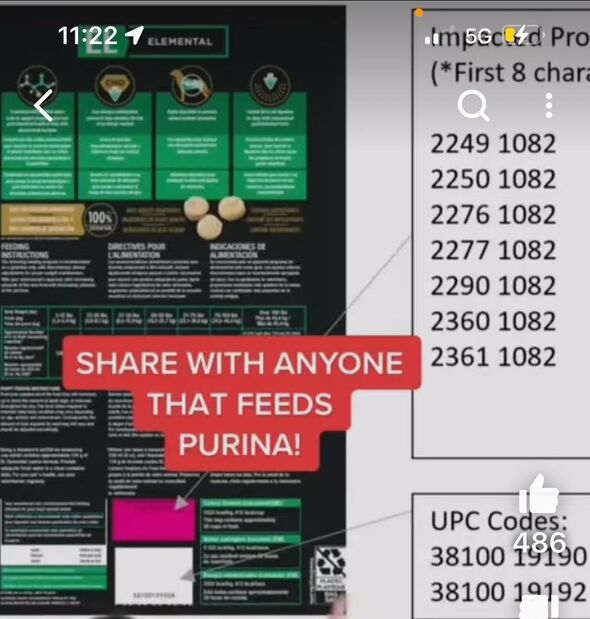


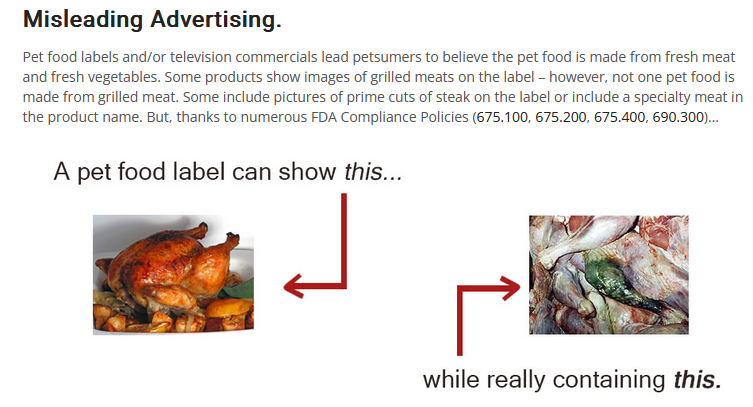

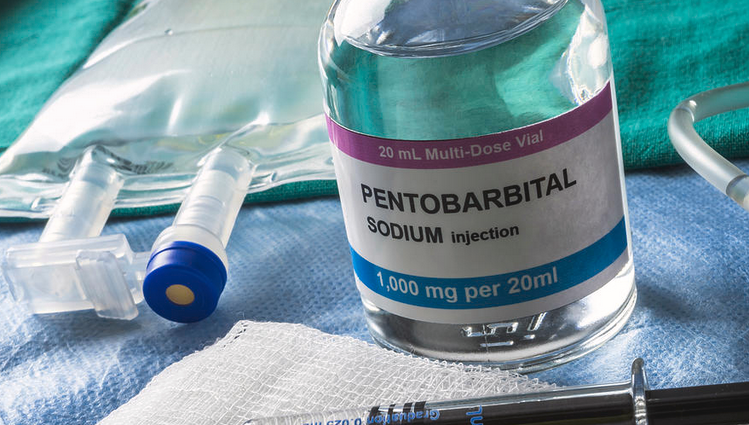



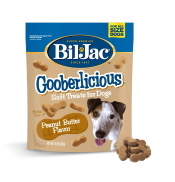
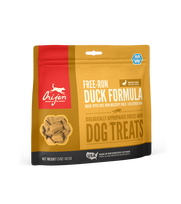

 RSS Feed
RSS Feed